-
Market SIZE ESTIMATES & FORECAST, BY TYPE, 2019-2035 (USD Billions)
-
\r\n\r\n\r\nNorth America Fat Replacers
-
Market SIZE ESTIMATES & FORECAST, BY APPLICATION, 2019-2035 (USD Billions)
-
\r\n\r\n\r\nNorth America Fat Replacers
-
Market SIZE ESTIMATES & FORECAST, BY SOURCE, 2019-2035 (USD Billions)
-
\r\n\r\n\r\nNorth America Fat Replacers
-
Market SIZE ESTIMATES & FORECAST, BY FORM, 2019-2035 (USD Billions)
-
\r\n\r\n\r\nNorth America Fat Replacers
-
Market SIZE ESTIMATES & FORECAST, BY REGIONAL, 2019-2035 (USD Billions)
-
\r\n\r\n\r\nUS Fat Replacers Market SIZE
-
ESTIMATES & FORECAST, BY TYPE, 2019-2035 (USD Billions)
-
\r\n\r\n\r\nUS Fat Replacers Market SIZE
-
ESTIMATES & FORECAST, BY APPLICATION, 2019-2035 (USD Billions)
-
\r\n\r\n\r\nUS Fat Replacers Market SIZE
-
ESTIMATES & FORECAST, BY SOURCE, 2019-2035 (USD Billions)
-
\r\n\r\n\r\nUS Fat Replacers Market SIZE
-
ESTIMATES & FORECAST, BY FORM, 2019-2035 (USD Billions)
-
\r\n\r\n\r\nUS Fat Replacers Market SIZE
-
ESTIMATES & FORECAST, BY REGIONAL, 2019-2035 (USD Billions)
-
\r\n\r\n\r\nCanada Fat Replacers Market
-
SIZE ESTIMATES & FORECAST, BY TYPE, 2019-2035 (USD Billions)
-
\r\n\r\n\r\nCanada Fat Replacers Market
-
SIZE ESTIMATES & FORECAST, BY APPLICATION, 2019-2035 (USD Billions)
-
\r\n\r\n\r\nCanada Fat Replacers Market
-
SIZE ESTIMATES & FORECAST, BY SOURCE, 2019-2035 (USD Billions)
-
\r\n\r\n\r\nCanada Fat Replacers Market
-
SIZE ESTIMATES & FORECAST, BY FORM, 2019-2035 (USD Billions)
-
\r\n\r\n\r\nCanada Fat Replacers Market
-
SIZE ESTIMATES & FORECAST, BY REGIONAL, 2019-2035 (USD Billions)
-
\r\n\r\n\r\nEurope Fat Replacers Market
-
SIZE ESTIMATES & FORECAST, BY TYPE, 2019-2035 (USD Billions)
-
\r\n\r\n\r\nEurope Fat Replacers Market
-
SIZE ESTIMATES & FORECAST, BY APPLICATION, 2019-2035 (USD Billions)
-
\r\n\r\n\r\nEurope Fat Replacers Market
-
SIZE ESTIMATES & FORECAST, BY SOURCE, 2019-2035 (USD Billions)
-
\r\n\r\n\r\nEurope Fat Replacers Market
-
SIZE ESTIMATES & FORECAST, BY FORM, 2019-2035 (USD Billions)
-
\r\n\r\n\r\nEurope Fat Replacers Market
-
SIZE ESTIMATES & FORECAST, BY REGIONAL, 2019-2035 (USD Billions)
-
\r\n\r\n\r\nGermany Fat Replacers Market
-
SIZE ESTIMATES & FORECAST, BY TYPE, 2019-2035 (USD Billions)
-
\r\n\r\n\r\nGermany Fat Replacers Market
-
SIZE ESTIMATES & FORECAST, BY APPLICATION, 2019-2035 (USD Billions)
-
\r\n\r\n\r\nGermany Fat Replacers Market
-
SIZE ESTIMATES & FORECAST, BY SOURCE, 2019-2035 (USD Billions)
-
\r\n\r\n\r\nGermany Fat Replacers Market
-
SIZE ESTIMATES & FORECAST, BY FORM, 2019-2035 (USD Billions)
-
\r\n\r\n\r\nGermany Fat Replacers Market
-
SIZE ESTIMATES & FORECAST, BY REGIONAL, 2019-2035 (USD Billions)
-
\r\n\r\n\r\nUK Fat Replacers Market SIZE
-
ESTIMATES & FORECAST, BY TYPE, 2019-2035 (USD Billions)
-
\r\n\r\n\r\nUK Fat Replacers Market SIZE
-
ESTIMATES & FORECAST, BY APPLICATION, 2019-2035 (USD Billions)
-
\r\n\r\n\r\nUK Fat Replacers Market SIZE
-
ESTIMATES & FORECAST, BY SOURCE, 2019-2035 (USD Billions)
-
\r\n\r\n\r\nUK Fat Replacers Market SIZE
-
ESTIMATES & FORECAST, BY FORM, 2019-2035 (USD Billions)
-
\r\n\r\n\r\nUK Fat Replacers Market SIZE
-
ESTIMATES & FORECAST, BY REGIONAL, 2019-2035 (USD Billions)
-
\r\n\r\n\r\nFrance Fat Replacers Market
-
SIZE ESTIMATES & FORECAST, BY TYPE, 2019-2035 (USD Billions)
-
\r\n\r\n\r\nFrance Fat Replacers Market
-
SIZE ESTIMATES & FORECAST, BY APPLICATION, 2019-2035 (USD Billions)
-
\r\n\r\n\r\nFrance Fat Replacers Market
-
SIZE ESTIMATES & FORECAST, BY SOURCE, 2019-2035 (USD Billions)
-
\r\n\r\n\r\nFrance Fat Replacers Market
-
SIZE ESTIMATES & FORECAST, BY FORM, 2019-2035 (USD Billions)
-
\r\n\r\n\r\nFrance Fat Replacers Market
-
SIZE ESTIMATES & FORECAST, BY REGIONAL, 2019-2035 (USD Billions)
-
\r\n\r\n\r\nRussia Fat Replacers Market
-
SIZE ESTIMATES & FORECAST, BY TYPE, 2019-2035 (USD Billions)
-
\r\n\r\n\r\nRussia Fat Replacers Market
-
SIZE ESTIMATES & FORECAST, BY APPLICATION, 2019-2035 (USD Billions)
-
\r\n\r\n\r\nRussia Fat Replacers Market
-
SIZE ESTIMATES & FORECAST, BY SOURCE, 2019-2035 (USD Billions)
-
\r\n\r\n\r\nRussia Fat Replacers Market
-
SIZE ESTIMATES & FORECAST, BY FORM, 2019-2035 (USD Billions)
-
\r\n\r\n\r\nRussia Fat Replacers Market
-
SIZE ESTIMATES & FORECAST, BY REGIONAL, 2019-2035 (USD Billions)
-
\r\n\r\n\r\nItaly Fat Replacers Market
-
SIZE ESTIMATES & FORECAST, BY TYPE, 2019-2035 (USD Billions)
-
\r\n\r\n\r\nItaly Fat Replacers Market
-
SIZE ESTIMATES & FORECAST, BY APPLICATION, 2019-2035 (USD Billions)
-
\r\n\r\n\r\nItaly Fat Replacers Market
-
SIZE ESTIMATES & FORECAST, BY SOURCE, 2019-2035 (USD Billions)
-
\r\n\r\n\r\nItaly Fat Replacers Market
-
SIZE ESTIMATES & FORECAST, BY FORM, 2019-2035 (USD Billions)
-
\r\n\r\n\r\nItaly Fat Replacers Market
-
SIZE ESTIMATES & FORECAST, BY REGIONAL, 2019-2035 (USD Billions)
-
\r\n\r\n\r\nSpain Fat Replacers Market
-
SIZE ESTIMATES & FORECAST, BY TYPE, 2019-2035 (USD Billions)
-
\r\n\r\n\r\nSpain Fat Replacers Market
-
SIZE ESTIMATES & FORECAST, BY APPLICATION, 2019-2035 (USD Billions)
-
\r\n\r\n\r\nSpain Fat Replacers Market
-
SIZE ESTIMATES & FORECAST, BY SOURCE, 2019-2035 (USD Billions)
-
\r\n\r\n\r\nSpain Fat Replacers Market
-
SIZE ESTIMATES & FORECAST, BY FORM, 2019-2035 (USD Billions)
-
\r\n\r\n\r\nSpain Fat Replacers Market
-
SIZE ESTIMATES & FORECAST, BY REGIONAL, 2019-2035 (USD Billions)
-
\r\n\r\n\r\nRest of Europe Fat Replacers
-
Market SIZE ESTIMATES & FORECAST, BY TYPE, 2019-2035 (USD Billions)
-
\r\n\r\n\r\nRest of Europe Fat Replacers
-
Market SIZE ESTIMATES & FORECAST, BY APPLICATION, 2019-2035 (USD Billions)
-
\r\n\r\n\r\nRest of Europe Fat Replacers
-
Market SIZE ESTIMATES & FORECAST, BY SOURCE, 2019-2035 (USD Billions)
-
\r\n\r\n\r\nRest of Europe Fat Replacers
-
Market SIZE ESTIMATES & FORECAST, BY FORM, 2019-2035 (USD Billions)
-
\r\n\r\n\r\nRest of Europe Fat Replacers
-
Market SIZE ESTIMATES & FORECAST, BY REGIONAL, 2019-2035 (USD Billions)
-
\r\n\r\n\r\nAPAC Fat Replacers Market SIZE
-
ESTIMATES & FORECAST, BY TYPE, 2019-2035 (USD Billions)
-
\r\n\r\n\r\nAPAC Fat Replacers Market SIZE
-
ESTIMATES & FORECAST, BY APPLICATION, 2019-2035 (USD Billions)
-
\r\n\r\n\r\nAPAC Fat Replacers Market SIZE
-
ESTIMATES & FORECAST, BY SOURCE, 2019-2035 (USD Billions)
-
\r\n\r\n\r\nAPAC Fat Replacers Market SIZE
-
ESTIMATES & FORECAST, BY FORM, 2019-2035 (USD Billions)
-
\r\n\r\n\r\nAPAC Fat Replacers Market SIZE
-
ESTIMATES & FORECAST, BY REGIONAL, 2019-2035 (USD Billions)
-
\r\n\r\n\r\nChina Fat Replacers Market
-
SIZE ESTIMATES & FORECAST, BY TYPE, 2019-2035 (USD Billions)
-
\r\n\r\n\r\nChina Fat Replacers Market
-
SIZE ESTIMATES & FORECAST, BY APPLICATION, 2019-2035 (USD Billions)
-
\r\n\r\n\r\nChina Fat Replacers Market
-
SIZE ESTIMATES & FORECAST, BY SOURCE, 2019-2035 (USD Billions)
-
\r\n\r\n\r\nChina Fat Replacers Market
-
SIZE ESTIMATES & FORECAST, BY FORM, 2019-2035 (USD Billions)
-
\r\n\r\n\r\nChina Fat Replacers Market
-
SIZE ESTIMATES & FORECAST, BY REGIONAL, 2019-2035 (USD Billions)
-
\r\n\r\n\r\nIndia Fat Replacers Market
-
SIZE ESTIMATES & FORECAST, BY TYPE, 2019-2035 (USD Billions)
-
\r\n\r\n\r\nIndia Fat Replacers Market
-
SIZE ESTIMATES & FORECAST, BY APPLICATION, 2019-2035 (USD Billions)
-
\r\n\r\n\r\nIndia Fat Replacers Market
-
SIZE ESTIMATES & FORECAST, BY SOURCE, 2019-2035 (USD Billions)
-
\r\n\r\n\r\nIndia Fat Replacers Market
-
SIZE ESTIMATES & FORECAST, BY FORM, 2019-2035 (USD Billions)
-
\r\n\r\n\r\nIndia Fat Replacers Market
-
SIZE ESTIMATES & FORECAST, BY REGIONAL, 2019-2035 (USD Billions)
-
\r\n\r\n\r\nJapan Fat Replacers Market
-
SIZE ESTIMATES & FORECAST, BY TYPE, 2019-2035 (USD Billions)
-
\r\n\r\n\r\nJapan Fat Replacers Market
-
SIZE ESTIMATES & FORECAST, BY APPLICATION, 2019-2035 (USD Billions)
-
\r\n\r\n\r\nJapan Fat Replacers Market
-
SIZE ESTIMATES & FORECAST, BY SOURCE, 2019-2035 (USD Billions)
-
\r\n\r\n\r\nJapan Fat Replacers Market
-
SIZE ESTIMATES & FORECAST, BY FORM, 2019-2035 (USD Billions)
-
\r\n\r\n\r\nJapan Fat Replacers Market
-
SIZE ESTIMATES & FORECAST, BY REGIONAL, 2019-2035 (USD Billions)
-
\r\n\r\n\r\nSouth Korea Fat Replacers Market
-
SIZE ESTIMATES & FORECAST, BY TYPE, 2019-2035 (USD Billions)
-
\r\n\r\n\r\nSouth Korea Fat Replacers Market
-
SIZE ESTIMATES & FORECAST, BY APPLICATION, 2019-2035 (USD Billions)
-
\r\n\r\n\r\nSouth Korea Fat Replacers Market
-
SIZE ESTIMATES & FORECAST, BY SOURCE, 2019-2035 (USD Billions)
-
\r\n\r\n\r\nSouth Korea Fat Replacers Market
-
SIZE ESTIMATES & FORECAST, BY FORM, 2019-2035 (USD Billions)
-
\r\n\r\n\r\nSouth Korea Fat Replacers Market
-
SIZE ESTIMATES & FORECAST, BY REGIONAL, 2019-2035 (USD Billions)
-
\r\n\r\n\r\nMalaysia Fat Replacers Market
-
SIZE ESTIMATES & FORECAST, BY TYPE, 2019-2035 (USD Billions)
-
\r\n\r\n\r\nMalaysia Fat Replacers Market
-
SIZE ESTIMATES & FORECAST, BY APPLICATION, 2019-2035 (USD Billions)
-
\r\n\r\n\r\nMalaysia Fat Replacers Market
-
SIZE ESTIMATES & FORECAST, BY SOURCE, 2019-2035 (USD Billions)
-
\r\n\r\n\r\nMalaysia Fat Replacers Market
-
SIZE ESTIMATES & FORECAST, BY FORM, 2019-2035 (USD Billions)
-
\r\n\r\n\r\nMalaysia Fat Replacers Market
-
SIZE ESTIMATES & FORECAST, BY REGIONAL, 2019-2035 (USD Billions)
-
\r\n\r\n\r\nThailand Fat Replacers Market
-
SIZE ESTIMATES & FORECAST, BY TYPE, 2019-2035 (USD Billions)
-
\r\n\r\n\r\nThailand Fat Replacers Market
-
SIZE ESTIMATES & FORECAST, BY APPLICATION, 2019-2035 (USD Billions)
-
\r\n\r\n\r\nThailand Fat Replacers Market
-
SIZE ESTIMATES & FORECAST, BY SOURCE, 2019-2035 (USD Billions)
-
\r\n\r\n\r\nThailand Fat Replacers Market
-
SIZE ESTIMATES & FORECAST, BY FORM, 2019-2035 (USD Billions)
-
\r\n\r\n\r\nThailand Fat Replacers Market
-
SIZE ESTIMATES & FORECAST, BY REGIONAL, 2019-2035 (USD Billions)
-
\r\n\r\n\r\nIndonesia Fat Replacers Market
-
SIZE ESTIMATES & FORECAST, BY TYPE, 2019-2035 (USD Billions)
-
\r\n\r\n\r\nIndonesia Fat Replacers Market
-
SIZE ESTIMATES & FORECAST, BY APPLICATION, 2019-2035 (USD Billions)
-
\r\n\r\n\r\nIndonesia Fat Replacers Market
-
SIZE ESTIMATES & FORECAST, BY SOURCE, 2019-2035 (USD Billions)
-
\r\n\r\n\r\nIndonesia Fat Replacers Market
-
SIZE ESTIMATES & FORECAST, BY FORM, 2019-2035 (USD Billions)
-
\r\n\r\n\r\nIndonesia Fat Replacers Market
-
SIZE ESTIMATES & FORECAST, BY REGIONAL, 2019-2035 (USD Billions)
-
\r\n\r\n\r\nRest of APAC Fat Replacers
-
Market SIZE ESTIMATES & FORECAST, BY TYPE, 2019-2035 (USD Billions)
-
\r\n\r\n\r\nRest of APAC Fat Replacers
-
Market SIZE ESTIMATES & FORECAST, BY APPLICATION, 2019-2035 (USD Billions)
-
\r\n\r\n\r\nRest of APAC Fat Replacers
-
Market SIZE ESTIMATES & FORECAST, BY SOURCE, 2019-2035 (USD Billions)
-
\r\n\r\n\r\nRest of APAC Fat Replacers
-
Market SIZE ESTIMATES & FORECAST, BY FORM, 2019-2035 (USD Billions)
-
\r\n\r\n\r\nRest of APAC Fat Replacers
-
Market SIZE ESTIMATES & FORECAST, BY REGIONAL, 2019-2035 (USD Billions)
-
\r\n\r\n\r\nSouth America Fat Replacers
-
Market SIZE ESTIMATES & FORECAST, BY TYPE, 2019-2035 (USD Billions)
-
\r\n\r\n\r\nSouth America Fat Replacers
-
Market SIZE ESTIMATES & FORECAST, BY APPLICATION, 2019-2035 (USD Billions)
-
\r\n\r\n\r\nSouth America Fat Replacers
-
Market SIZE ESTIMATES & FORECAST, BY SOURCE, 2019-2035 (USD Billions)
-
\r\n\r\n\r\nSouth America Fat Replacers
-
Market SIZE ESTIMATES & FORECAST, BY FORM, 2019-2035 (USD Billions)
-
\r\n\r\n\r\nSouth America Fat Replacers
-
Market SIZE ESTIMATES & FORECAST, BY REGIONAL, 2019-2035 (USD Billions)
-
\r\n\r\n\r\nBrazil Fat Replacers Market
-
SIZE ESTIMATES & FORECAST, BY TYPE, 2019-2035 (USD Billions)
-
\r\n\r\n\r\nBrazil Fat Replacers Market
-
SIZE ESTIMATES & FORECAST, BY APPLICATION, 2019-2035 (USD Billions)
-
\r\n\r\n\r\nBrazil Fat Replacers Market
-
SIZE ESTIMATES & FORECAST, BY SOURCE, 2019-2035 (USD Billions)
-
\r\n\r\n\r\nBrazil Fat Replacers Market
-
SIZE ESTIMATES & FORECAST, BY FORM, 2019-2035 (USD Billions)
-
\r\n\r\n\r\nBrazil Fat Replacers Market
-
SIZE ESTIMATES & FORECAST, BY REGIONAL, 2019-2035 (USD Billions)
-
\r\n\r\n\r\nMexico Fat Replacers Market
-
SIZE ESTIMATES & FORECAST, BY TYPE, 2019-2035 (USD Billions)
-
\r\n\r\n\r\nMexico Fat Replacers Market
-
SIZE ESTIMATES & FORECAST, BY APPLICATION, 2019-2035 (USD Billions)
-
\r\n\r\n\r\nMexico Fat Replacers Market
-
SIZE ESTIMATES & FORECAST, BY SOURCE, 2019-2035 (USD Billions)
-
\r\n\r\n\r\nMexico Fat Replacers Market
-
SIZE ESTIMATES & FORECAST, BY FORM, 2019-2035 (USD Billions)
-
\r\n\r\n\r\nMexico Fat Replacers Market
-
SIZE ESTIMATES & FORECAST, BY REGIONAL, 2019-2035 (USD Billions)
-
\r\n\r\n\r\nArgentina Fat Replacers Market
-
SIZE ESTIMATES & FORECAST, BY TYPE, 2019-2035 (USD Billions)
-
\r\n\r\n\r\nArgentina Fat Replacers Market
-
SIZE ESTIMATES & FORECAST, BY APPLICATION, 2019-2035 (USD Billions)
-
\r\n\r\n\r\nArgentina Fat Replacers Market
-
SIZE ESTIMATES & FORECAST, BY SOURCE, 2019-2035 (USD Billions)
-
\r\n\r\n\r\nArgentina Fat Replacers Market
-
SIZE ESTIMATES & FORECAST, BY FORM, 2019-2035 (USD Billions)
-
\r\n\r\n\r\nArgentina Fat Replacers Market
-
SIZE ESTIMATES & FORECAST, BY REGIONAL, 2019-2035 (USD Billions)
-
\r\n\r\n\r\nRest of South America Fat Replacers
-
Market SIZE ESTIMATES & FORECAST, BY TYPE, 2019-2035 (USD Billions)
-
\r\n\r\n\r\nRest of South America Fat Replacers
-
Market SIZE ESTIMATES & FORECAST, BY APPLICATION, 2019-2035 (USD Billions)
-
\r\n\r\n\r\nRest of South America Fat Replacers
-
Market SIZE ESTIMATES & FORECAST, BY SOURCE, 2019-2035 (USD Billions)
-
\r\n\r\n\r\nRest of South America Fat Replacers
-
Market SIZE ESTIMATES & FORECAST, BY FORM, 2019-2035 (USD Billions)
-
\r\n\r\n\r\nRest of South America Fat Replacers
-
Market SIZE ESTIMATES & FORECAST, BY REGIONAL, 2019-2035 (USD Billions)
-
\r\n\r\n\r\nMEA Fat Replacers Market SIZE
-
ESTIMATES & FORECAST, BY TYPE, 2019-2035 (USD Billions)
-
\r\n\r\n\r\nMEA Fat Replacers Market SIZE
-
ESTIMATES & FORECAST, BY APPLICATION, 2019-2035 (USD Billions)
-
\r\n\r\n\r\nMEA Fat Replacers Market SIZE
-
ESTIMATES & FORECAST, BY SOURCE, 2019-2035 (USD Billions)
-
\r\n\r\n\r\nMEA Fat Replacers Market SIZE
-
ESTIMATES & FORECAST, BY FORM, 2019-2035 (USD Billions)
-
\r\n\r\n\r\nMEA Fat Replacers Market SIZE
-
ESTIMATES & FORECAST, BY REGIONAL, 2019-2035 (USD Billions)
-
\r\n\r\n\r\nGCC Countries Fat Replacers
-
Market SIZE ESTIMATES & FORECAST, BY TYPE, 2019-2035 (USD Billions)
-
\r\n\r\n\r\nGCC Countries Fat Replacers
-
Market SIZE ESTIMATES & FORECAST, BY APPLICATION, 2019-2035 (USD Billions)
-
\r\n\r\n\r\nGCC Countries Fat Replacers
-
Market SIZE ESTIMATES & FORECAST, BY SOURCE, 2019-2035 (USD Billions)
-
\r\n\r\n\r\nGCC Countries Fat Replacers
-
Market SIZE ESTIMATES & FORECAST, BY FORM, 2019-2035 (USD Billions)
-
\r\n\r\n\r\nGCC Countries Fat Replacers
-
Market SIZE ESTIMATES & FORECAST, BY REGIONAL, 2019-2035 (USD Billions)
-
\r\n\r\n\r\nSouth Africa Fat Replacers
-
Market SIZE ESTIMATES & FORECAST, BY TYPE, 2019-2035 (USD Billions)
-
\r\n\r\n\r\nSouth Africa Fat Replacers
-
Market SIZE ESTIMATES & FORECAST, BY APPLICATION, 2019-2035 (USD Billions)
-
\r\n\r\n\r\nSouth Africa Fat Replacers
-
Market SIZE ESTIMATES & FORECAST, BY SOURCE, 2019-2035 (USD Billions)
-
\r\n\r\n\r\nSouth Africa Fat Replacers
-
Market SIZE ESTIMATES & FORECAST, BY FORM, 2019-2035 (USD Billions)
-
\r\n\r\n\r\nSouth Africa Fat Replacers
-
Market SIZE ESTIMATES & FORECAST, BY REGIONAL, 2019-2035 (USD Billions)
-
\r\n\r\n\r\nRest of MEA Fat Replacers Market
-
SIZE ESTIMATES & FORECAST, BY TYPE, 2019-2035 (USD Billions)
-
\r\n\r\n\r\nRest of MEA Fat Replacers Market
-
SIZE ESTIMATES & FORECAST, BY APPLICATION, 2019-2035 (USD Billions)
-
\r\n\r\n\r\nRest of MEA Fat Replacers Market
-
SIZE ESTIMATES & FORECAST, BY SOURCE, 2019-2035 (USD Billions)
-
\r\n\r\n\r\nRest of MEA Fat Replacers Market
-
SIZE ESTIMATES & FORECAST, BY FORM, 2019-2035 (USD Billions)
-
\r\n\r\n\r\nRest of MEA Fat Replacers Market
-
SIZE ESTIMATES & FORECAST, BY REGIONAL, 2019-2035 (USD Billions)
-
\r\n\r\n\r\nPRODUCT LAUNCH/PRODUCT DEVELOPMENT/APPROVAL
-
\r\n\r\n\r\nACQUISITION/PARTNERSHIP
-
\r\n\r\n\r\n
-
\r\n
-
\r\n
-
\r\n
-
\r\n
-
\r\n
-
\r\n
-
\r\n
-
\r\n
-
\r\n
-
\r\n
-
\r\n
-
\r\n
-
\r\n
-
\r\n
-
\r\n
-
\r\n
-
\r\n
-
\r\n
-
\r\n
-
\r\n
-
\r\n
-
\r\n
-
\r\n
-
\r\n
-
\r\n
-
\r\n
-
\r\n
-
\r\n
-
\r\nLIST Of figures
-
\r\n
-
\r\n\r\n\r\nMARKET SYNOPSIS
-
\r\n\r\n\r\nNORTH AMERICA FAT REPLACERS
-
MARKET ANALYSIS
-
\r\n\r\n\r\nUS FAT REPLACERS MARKET ANALYSIS BY TYPE
-
\r\n\r\n\r\nUS FAT REPLACERS MARKET ANALYSIS
-
BY APPLICATION
-
\r\n\r\n\r\nUS FAT REPLACERS MARKET ANALYSIS BY SOURCE
-
\r\n\r\n\r\nUS FAT REPLACERS MARKET ANALYSIS
-
BY FORM
-
\r\n\r\n\r\nUS FAT REPLACERS MARKET ANALYSIS BY REGIONAL
-
\r\n\r\n\r\nCANADA FAT REPLACERS MARKET
-
ANALYSIS BY TYPE
-
\r\n\r\n\r\nCANADA FAT REPLACERS MARKET ANALYSIS BY APPLICATION
-
\r\n\r\n\r\nCANADA FAT REPLACERS MARKET
-
ANALYSIS BY SOURCE
-
\r\n\r\n\r\nCANADA FAT REPLACERS MARKET ANALYSIS BY FORM
-
\r\n\r\n\r\nCANADA FAT REPLACERS MARKET
-
ANALYSIS BY REGIONAL
-
\r\n\r\n\r\nEUROPE FAT REPLACERS MARKET ANALYSIS
-
\r\n\r\n\r\nGERMANY FAT REPLACERS MARKET
-
ANALYSIS BY TYPE
-
\r\n\r\n\r\nGERMANY FAT REPLACERS MARKET ANALYSIS BY APPLICATION
-
\r\n\r\n\r\nGERMANY FAT REPLACERS MARKET
-
ANALYSIS BY SOURCE
-
\r\n\r\n\r\nGERMANY FAT REPLACERS MARKET ANALYSIS BY FORM
-
\r\n\r\n\r\nGERMANY FAT REPLACERS MARKET
-
ANALYSIS BY REGIONAL
-
\r\n\r\n\r\nUK FAT REPLACERS MARKET ANALYSIS BY TYPE
-
\r\n\r\n\r\nUK FAT REPLACERS MARKET ANALYSIS
-
BY APPLICATION
-
\r\n\r\n\r\nUK FAT REPLACERS MARKET ANALYSIS BY SOURCE
-
\r\n\r\n\r\nUK FAT REPLACERS MARKET ANALYSIS
-
BY FORM
-
\r\n\r\n\r\nUK FAT REPLACERS MARKET ANALYSIS BY REGIONAL
-
\r\n\r\n\r\nFRANCE FAT REPLACERS MARKET
-
ANALYSIS BY TYPE
-
\r\n\r\n\r\nFRANCE FAT REPLACERS MARKET ANALYSIS BY APPLICATION
-
\r\n\r\n\r\nFRANCE FAT REPLACERS MARKET
-
ANALYSIS BY SOURCE
-
\r\n\r\n\r\nFRANCE FAT REPLACERS MARKET ANALYSIS BY FORM
-
\r\n\r\n\r\nFRANCE FAT REPLACERS MARKET
-
ANALYSIS BY REGIONAL
-
\r\n\r\n\r\nRUSSIA FAT REPLACERS MARKET ANALYSIS BY TYPE
-
\r\n\r\n\r\nRUSSIA FAT REPLACERS MARKET
-
ANALYSIS BY APPLICATION
-
\r\n\r\n\r\nRUSSIA FAT REPLACERS MARKET ANALYSIS BY SOURCE
-
\r\n\r\n\r\nRUSSIA FAT REPLACERS MARKET
-
ANALYSIS BY FORM
-
\r\n\r\n\r\nRUSSIA FAT REPLACERS MARKET ANALYSIS BY REGIONAL
-
\r\n\r\n\r\nITALY FAT REPLACERS MARKET
-
ANALYSIS BY TYPE
-
\r\n\r\n\r\nITALY FAT REPLACERS MARKET ANALYSIS BY APPLICATION
-
\r\n\r\n\r\nITALY FAT REPLACERS MARKET
-
ANALYSIS BY SOURCE
-
\r\n\r\n\r\nITALY FAT REPLACERS MARKET ANALYSIS BY FORM
-
\r\n\r\n\r\nITALY FAT REPLACERS MARKET
-
ANALYSIS BY REGIONAL
-
\r\n\r\n\r\nSPAIN FAT REPLACERS MARKET ANALYSIS BY TYPE
-
\r\n\r\n\r\nSPAIN FAT REPLACERS MARKET
-
ANALYSIS BY APPLICATION
-
\r\n\r\n\r\nSPAIN FAT REPLACERS MARKET ANALYSIS BY SOURCE
-
\r\n\r\n\r\nSPAIN FAT REPLACERS MARKET
-
ANALYSIS BY FORM
-
\r\n\r\n\r\nSPAIN FAT REPLACERS MARKET ANALYSIS BY REGIONAL
-
\r\n\r\n\r\nREST OF EUROPE FAT REPLACERS
-
MARKET ANALYSIS BY TYPE
-
\r\n\r\n\r\nREST OF EUROPE FAT REPLACERS MARKET ANALYSIS BY
-
APPLICATION
-
\r\n\r\n\r\nREST OF EUROPE FAT REPLACERS MARKET ANALYSIS BY SOURCE
-
\r\n\r\n\r\nREST OF EUROPE FAT REPLACERS
-
MARKET ANALYSIS BY FORM
-
\r\n\r\n\r\nREST OF EUROPE FAT REPLACERS MARKET ANALYSIS BY
-
REGIONAL
-
\r\n\r\n\r\nAPAC FAT REPLACERS MARKET ANALYSIS
-
\r\n\r\n\r\nCHINA FAT REPLACERS MARKET
-
ANALYSIS BY TYPE
-
\r\n\r\n\r\nCHINA FAT REPLACERS MARKET ANALYSIS BY APPLICATION
-
\r\n\r\n\r\nCHINA FAT REPLACERS MARKET
-
ANALYSIS BY SOURCE
-
\r\n\r\n\r\nCHINA FAT REPLACERS MARKET ANALYSIS BY FORM
-
\r\n\r\n\r\nCHINA FAT REPLACERS MARKET
-
ANALYSIS BY REGIONAL
-
\r\n\r\n\r\nINDIA FAT REPLACERS MARKET ANALYSIS BY TYPE
-
\r\n\r\n\r\nINDIA FAT REPLACERS MARKET
-
ANALYSIS BY APPLICATION
-
\r\n\r\n\r\nINDIA FAT REPLACERS MARKET ANALYSIS BY SOURCE
-
\r\n\r\n\r\nINDIA FAT REPLACERS MARKET
-
ANALYSIS BY FORM
-
\r\n\r\n\r\nINDIA FAT REPLACERS MARKET ANALYSIS BY REGIONAL
-
\r\n\r\n\r\nJAPAN FAT REPLACERS MARKET
-
ANALYSIS BY TYPE
-
\r\n\r\n\r\nJAPAN FAT REPLACERS MARKET ANALYSIS BY APPLICATION
-
\r\n\r\n\r\nJAPAN FAT REPLACERS MARKET
-
ANALYSIS BY SOURCE
-
\r\n\r\n\r\nJAPAN FAT REPLACERS MARKET ANALYSIS BY FORM
-
\r\n\r\n\r\nJAPAN FAT REPLACERS MARKET
-
ANALYSIS BY REGIONAL
-
\r\n\r\n\r\nSOUTH KOREA FAT REPLACERS MARKET ANALYSIS BY TYPE
-
\r\n\r\n\r\nSOUTH KOREA FAT REPLACERS MARKET
-
ANALYSIS BY APPLICATION
-
\r\n\r\n\r\nSOUTH KOREA FAT REPLACERS MARKET ANALYSIS BY SOURCE
-
\r\n\r\n\r\nSOUTH KOREA FAT REPLACERS MARKET
-
ANALYSIS BY FORM
-
\r\n\r\n\r\nSOUTH KOREA FAT REPLACERS MARKET ANALYSIS BY REGIONAL
-
\r\n\r\n\r\nMALAYSIA FAT REPLACERS MARKET
-
ANALYSIS BY TYPE
-
\r\n\r\n\r\nMALAYSIA FAT REPLACERS MARKET ANALYSIS BY APPLICATION
-
\r\n\r\n\r\nMALAYSIA FAT REPLACERS MARKET
-
ANALYSIS BY SOURCE
-
\r\n\r\n\r\nMALAYSIA FAT REPLACERS MARKET ANALYSIS BY FORM
-
\r\n\r\n\r\nMALAYSIA FAT REPLACERS MARKET
-
ANALYSIS BY REGIONAL
-
\r\n\r\n\r\nTHAILAND FAT REPLACERS MARKET ANALYSIS BY TYPE
-
\r\n\r\n\r\nTHAILAND FAT REPLACERS MARKET
-
ANALYSIS BY APPLICATION
-
\r\n\r\n\r\nTHAILAND FAT REPLACERS MARKET ANALYSIS BY SOURCE
-
\r\n\r\n\r\nTHAILAND FAT REPLACERS MARKET
-
ANALYSIS BY FORM
-
\r\n\r\n\r\nTHAILAND FAT REPLACERS MARKET ANALYSIS BY REGIONAL
-
\r\n\r\n\r\nINDONESIA FAT REPLACERS MARKET
-
ANALYSIS BY TYPE
-
\r\n\r\n\r\nINDONESIA FAT REPLACERS MARKET ANALYSIS BY APPLICATION
-
\r\n\r\n\r\nINDONESIA FAT REPLACERS MARKET
-
ANALYSIS BY SOURCE
-
\r\n\r\n\r\nINDONESIA FAT REPLACERS MARKET ANALYSIS BY FORM
-
\r\n\r\n\r\nINDONESIA FAT REPLACERS MARKET
-
ANALYSIS BY REGIONAL
-
\r\n\r\n\r\nREST OF APAC FAT REPLACERS MARKET ANALYSIS BY TYPE
-
\r\n\r\n\r\nREST OF APAC FAT REPLACERS
-
MARKET ANALYSIS BY APPLICATION
-
\r\n\r\n\r\nREST OF APAC FAT REPLACERS MARKET ANALYSIS BY SOURCE
-
\r\n\r\n\r\nREST OF APAC FAT REPLACERS
-
MARKET ANALYSIS BY FORM
-
\r\n\r\n\r\nREST OF APAC FAT REPLACERS MARKET ANALYSIS BY REGIONAL
-
\r\n\r\n\r\nSOUTH AMERICA FAT REPLACERS
-
MARKET ANALYSIS
-
\r\n\r\n\r\nBRAZIL FAT REPLACERS MARKET ANALYSIS BY TYPE
-
\r\n\r\n\r\nBRAZIL FAT REPLACERS MARKET
-
ANALYSIS BY APPLICATION
-
\r\n\r\n\r\nBRAZIL FAT REPLACERS MARKET ANALYSIS BY SOURCE
-
\r\n\r\n\r\nBRAZIL FAT REPLACERS MARKET
-
ANALYSIS BY FORM
-
\r\n\r\n\r\nBRAZIL FAT REPLACERS MARKET ANALYSIS BY REGIONAL
-
\r\n\r\n\r\nMEXICO FAT REPLACERS MARKET
-
ANALYSIS BY TYPE
-
\r\n\r\n\r\nMEXICO FAT REPLACERS MARKET ANALYSIS BY APPLICATION
-
\r\n\r\n\r\nMEXICO FAT REPLACERS MARKET
-
ANALYSIS BY SOURCE
-
\r\n\r\n\r\nMEXICO FAT REPLACERS MARKET ANALYSIS BY FORM
-
\r\n\r\n\r\nMEXICO FAT REPLACERS MARKET
-
ANALYSIS BY REGIONAL
-
\r\n\r\n\r\nARGENTINA FAT REPLACERS MARKET ANALYSIS BY TYPE
-
\r\n\r\n\r\nARGENTINA FAT REPLACERS MARKET
-
ANALYSIS BY APPLICATION
-
\r\n\r\n\r\nARGENTINA FAT REPLACERS MARKET ANALYSIS BY SOURCE
-
\r\n\r\n\r\nARGENTINA FAT REPLACERS MARKET
-
ANALYSIS BY FORM
-
\r\n\r\n\r\nARGENTINA FAT REPLACERS MARKET ANALYSIS BY REGIONAL
-
\r\n\r\n\r\nREST OF SOUTH AMERICA FAT REPLACERS
-
MARKET ANALYSIS BY TYPE
-
\r\n\r\n\r\nREST OF SOUTH AMERICA FAT REPLACERS MARKET ANALYSIS
-
BY APPLICATION
-
\r\n\r\n\r\nREST OF SOUTH AMERICA FAT REPLACERS MARKET ANALYSIS BY
-
SOURCE
-
\r\n\r\n\r\nREST OF SOUTH AMERICA FAT REPLACERS MARKET ANALYSIS BY FORM
-
\r\n\r\n\r\nREST OF SOUTH AMERICA FAT REPLACERS
-
MARKET ANALYSIS BY REGIONAL
-
\r\n\r\n\r\nMEA FAT REPLACERS MARKET ANALYSIS
-
\r\n\r\n\r\nGCC COUNTRIES FAT REPLACERS
-
MARKET ANALYSIS BY TYPE
-
\r\n\r\n\r\nGCC COUNTRIES FAT REPLACERS MARKET ANALYSIS BY APPLICATION
-
\r\n\r\n\r\nGCC COUNTRIES FAT REPLACERS
-
MARKET ANALYSIS BY SOURCE
-
\r\n\r\n\r\nGCC COUNTRIES FAT REPLACERS MARKET ANALYSIS BY FORM
-
\r\n\r\n\r\nGCC COUNTRIES FAT REPLACERS
-
MARKET ANALYSIS BY REGIONAL
-
\r\n\r\n\r\nSOUTH AFRICA FAT REPLACERS MARKET ANALYSIS BY TYPE
-
\r\n\r\n\r\nSOUTH AFRICA FAT REPLACERS
-
MARKET ANALYSIS BY APPLICATION
-
\r\n\r\n\r\nSOUTH AFRICA FAT REPLACERS MARKET ANALYSIS BY SOURCE
-
\r\n\r\n\r\nSOUTH AFRICA FAT REPLACERS
-
MARKET ANALYSIS BY FORM
-
\r\n\r\n\r\nSOUTH AFRICA FAT REPLACERS MARKET ANALYSIS BY REGIONAL
-
\r\n\r\n\r\nREST OF MEA FAT REPLACERS MARKET
-
ANALYSIS BY TYPE
-
\r\n\r\n\r\nREST OF MEA FAT REPLACERS MARKET ANALYSIS BY APPLICATION
-
\r\n\r\n\r\nREST OF MEA FAT REPLACERS MARKET
-
ANALYSIS BY SOURCE
-
\r\n\r\n\r\nREST OF MEA FAT REPLACERS MARKET ANALYSIS BY FORM
-
\r\n\r\n\r\nREST OF MEA FAT REPLACERS MARKET
-
ANALYSIS BY REGIONAL
-
\r\n\r\n\r\nKEY BUYING CRITERIA OF FAT REPLACERS MARKET
-
\r\n\r\n\r\nRESEARCH PROCESS OF MRFR
-
\r\n\r\n\r\nDRO ANALYSIS OF FAT REPLACERS
-
MARKET
-
\r\n\r\n\r\nDRIVERS IMPACT ANALYSIS: FAT REPLACERS MARKET
-
\r\n\r\n\r\nRESTRAINTS IMPACT ANALYSIS:
-
FAT REPLACERS MARKET
-
\r\n\r\n\r\nSUPPLY / VALUE CHAIN: FAT REPLACERS MARKET
-
\r\n\r\n\r\nFAT REPLACERS MARKET, BY TYPE,
-
\r\n\r\n\r\nFAT REPLACERS MARKET, BY TYPE, 2019 TO 2035 (USD Billions)
-
\r\n\r\n\r\nFAT REPLACERS MARKET, BY APPLICATION,
-
\r\n\r\n\r\nFAT REPLACERS MARKET, BY APPLICATION, 2019 TO 2035 (USD
-
Billions)
-
\r\n\r\n\r\nFAT REPLACERS MARKET, BY SOURCE, 2025 (% SHARE)
-
\r\n\r\n\r\nFAT REPLACERS MARKET, BY SOURCE,
-
\r\n\r\n\r\nFAT REPLACERS MARKET, BY FORM, 2025 (% SHARE)
-
\r\n\r\n\r\nFAT REPLACERS MARKET, BY FORM,
-
\r\n\r\n\r\nFAT REPLACERS MARKET, BY REGIONAL, 2025 (% SHARE)
-
\r\n\r\n\r\nFAT REPLACERS MARKET, BY REGIONAL,
-
\r\n\r\n\r\nBENCHMARKING OF MAJOR COMPETITORS
-
\r\n\r\n\r\n

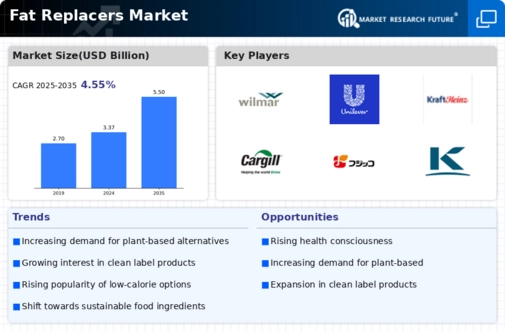
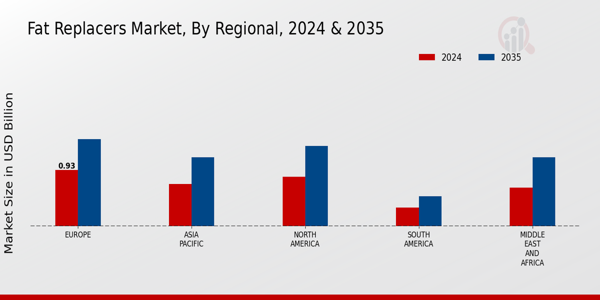

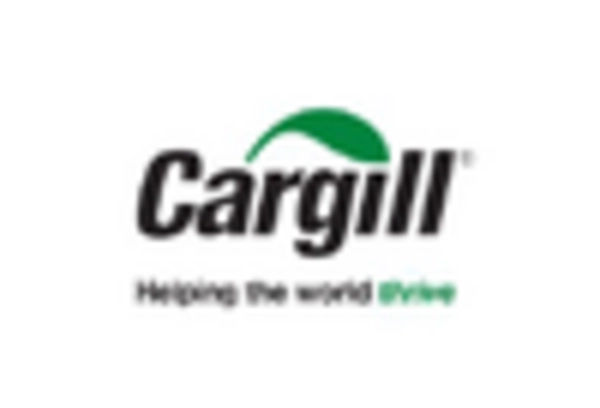
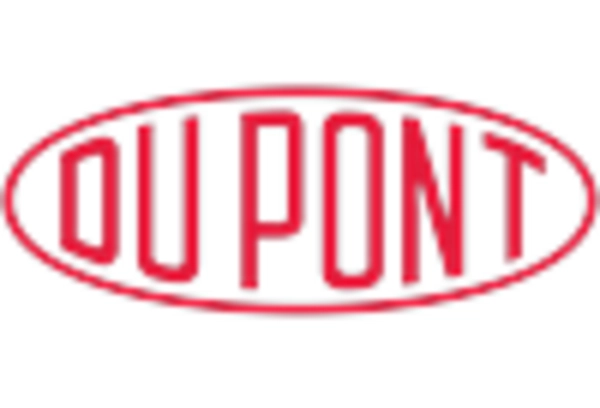

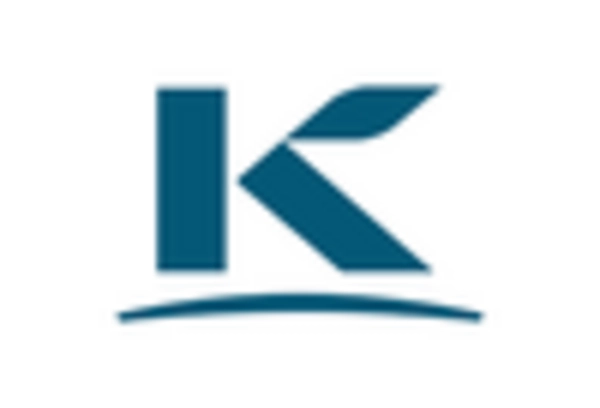


Leave a Comment